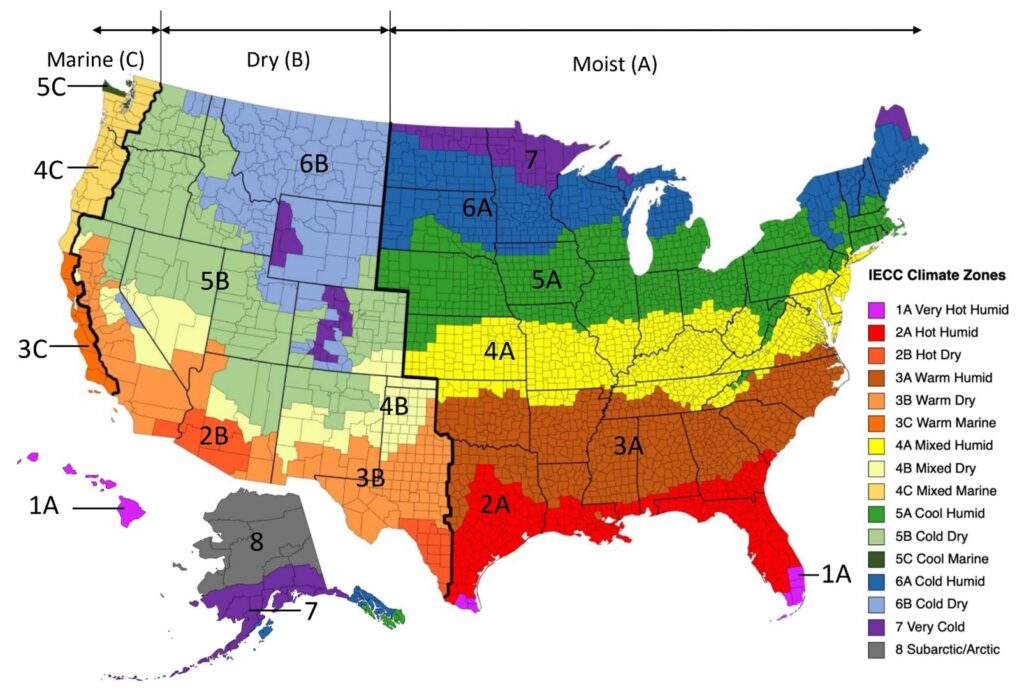Well-insulated homes can be more comfortable to live in, have increased resale values, and have lower energy costs compared to poorly insulated homes. There are many options to choose from when considering adding insulation to a home and understanding some basic concepts about insulation can help you make the right decision for your situation.
What You See | What It Probably Is | R Value per Inch |
Loose pink, yellow, or white fibers | Loosefill fiberglass | 2.5 |
Gray, newspaper-like fibers | Loosefill cellulose | 3.7 |
Dense gray, white, or speckled fibers | Mineral wool | 3.1 |
Pink, yellow, or white blankets/rolls | Fiberglass batt | 3.2 |
White rigid foam board | Expanded polystyrene board | 4.0-4.5 |
Pink or blue rigid foam board/spray | Extruded polystyrene | 5.0-5.5 |
Yellow or white rigid foam board/spray | Polyurethane board or spray | 6.0-7.5 |
Once we’ve determined where the home’s thermal boundaries are (or should be), and the R-value of existing insulation at these thermal boundaries, we can decide whether adding insulation is necessary.
To make this decision, we compare your current R-values with these recommended R-values for most Colorado homes:
For vented spaceIf the R-values in the spaces of the thermal boundary are significantly less than these recommended values, it should be cost-effective to add insulation to those spaces.
Keep in mind that often recommend even higher R-values (i.e. R-60 in attics, R-30 in walls, and R-40 in floors). These recommendations are for homeowners interested in reducing energy use even further and/or for those living in cold mountain climates in the state. In any case, once you decide to add insulation the question then becomes: what type should I choose?s, we focus on insulating the ceiling to trim heating and cooling costs, while unvented spaces see insulation on the walls, benefiting from conditioned air supplied by the rest of your home.
Regardless of the type, our commitment is to keep your crawl space dry, conditioned, and tightly sealed, controlling temperature, humidity, and warding off pests. Alex Home Pro Inc. excels in seamless insulation replacement, ensuring you feel the difference in comfort and efficiency.
Space | Recommended R-Value |
Attic | 49 |
Exterior Wall | 18 |
Floor | 25 |
Crawlspace | 19 |
Basement | 11 |
There are advantages and disadvantages to all types of insulation as shown in Table 2 which was adapted from the U.S. Department of Energy. The Table gives you a better understanding of what you may want to ask your technician during the estimate.

Type | Insulation Materials | Common Application(s) | Advantages | Disadvantages |
Blanket: batts and rolls |
|
|
|
|
Loose-fill and blown-in |
|
|
|
|
Sprayed foam and foamed-in-place |
|
|
|
|
Rigid foam board |
|
|
|
|
Insulating concrete forms (ICFs) |
|
|
|
|
Structural insulated panels (SIPs) |
|
|
|
|
Usually, batts or blankets are less expensive and the most requested type of insulation. Blown-in insulation is versatile but cost more. For our clients who insist on the blown-in insulation, we make sure they know that greenhouse gas emissions associated with the blowing agent used to produce both extruded polystyrene foam board and standard closed cell spray polyurethane foam are so high that the ‘greenhouse gas payback period’ for installing these types of insulation can exceed 100 years if applied in attic spaces 800 sq. ft. or more. To offset this ratio, as well as the high cost of these spray foams, we apply them in small amounts in conjunction with another type of insulation.
Heating degree days/year can easily be obtained through an online search. A trusted site like the U.S. Department of Housing and Urban Development’s database should be utilized. Heating degree days for select cities in Colorado are also listed
City | HDD/Year |
Alamosa | 8,736 |
Burlington | 6,261 |
Craig | 8,351 |
Denver | 6,128 |
Durango | 6,779 |
Fort Collins | 6,238 |
Grand Junction | 5,489 |
Pueblo | 5,598 |
Vail | 10,646 |
Fiberglass and mineral wool insulation are the lowest-cost solution for homeowners to meet or surpass code air leakage rate requirements of 3 or 5 air changes per hour depending on climate zone. For our client, an airtight building envelope results in energy savings and increased thermal comfort.

We are a company dedicated to improve the life of people while taking care of the environment.
Copyright © Alex Home Pro 2023